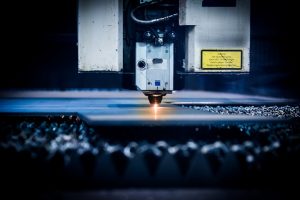
Fused deposition modeling isn’t the only 3D printing method. Although it’s the most popular, there are several other 3D printing methods available, including selective laser melting. Selective laser melting is a relatively new 3D printing method, but it’s gained popularity among manufacturing companies in recent years. Like other 3D printing methods, it’s designed to build objects from a computer-generated model. Selective laser melting, however, uses a completely different approach than most other 3D printing methods.
What Is Selective Laser Melting?
Selective laser melting is a high-tech 3D printing method that involves melting powder particles so that they fuse together. During the process, a high-powered laser passes across a bed of powder particles to heat them up. The laser doesn’t strike all the powder particles. Rather, it “selectively” targets specific areas to build the desired object.
Selective laser melting is a variation of selective laser sintering. Both of these 3D printing methods use a laser to heat, as well as bind, powder particles. The difference is that selective laser sintering only heats the powder particles just enough to liquefy them so that they bind together, whereas selective laser melting uses more heat to not only liquefy but also melt the powder particles. It’s a subtle difference, but the nuances in temperature between these two process results in different properties.
Benefits of Selective Laser Melting
Although it’s relatively new, selective laser melting is becoming popular because of the unique benefits it offers. Objects built using selective laser melting, for instance, are typically stronger than those built using other, more common 3D printing processes. The process doesn’t just deposit material onto a bed. Rather, it melts the raw material to create a super-strong and equally durable object. This allows for an exceptional level of strength that’s not found in objects built using other 3D printing methods.
Selective laser melting also supports a variety of custom sizes and shapes. Manufacturing companies aren’t limited to building objects with fixed dimensions. Rather, they can customize the size and shape when building an object with selective laser melting.
In Conclusion
A variation of selective laser sintering, selective laser melting is a 3D printing method that uses a high-powered laser to melt powder particles. As the powder particles melt, they bind together. Selective laser melting allows for the creation of strong and durable objects with custom dimensions. The downside, however, is that it costs more than other 3D printing processes since it requires the use of a high-powered laser.
No tags for this post.